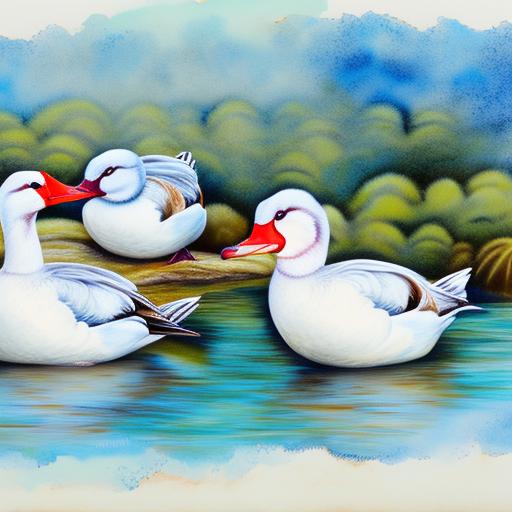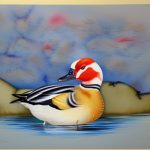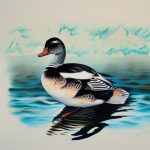White duck breeds have been a popular choice for farmers and backyard enthusiasts in Australia for many years. These beautiful birds are not only valued for their egg production and meat, but also for their pest control abilities and their charming presence on the farm. In Australia, there are several popular white duck breeds that have become favorites among poultry keepers. This article will explore the characteristics, traits, breeding, care, and agricultural significance of white duck breeds in Australia. Additionally, we will discuss conservation efforts to protect these beloved birds and ensure their future in the Australian poultry industry.
Key Takeaways
- White duck breeds are popular in Australia for their unique characteristics and traits.
- Some popular white duck breeds in Australia include the Pekin, Aylesbury, and Indian Runner.
- White duck breeds are known for their hardiness, adaptability, and good egg-laying abilities.
- Breeding and caring for white duck breeds in Australia requires proper housing, feeding, and healthcare.
- White duck breeds play a significant role in Australian agriculture, particularly in pest control and egg production.
Popular White Duck Breeds in Australia
Among the most popular white duck breeds in Australia are the Pekin, Aylesbury, and Indian Runner ducks. The Pekin duck is a large, white breed known for its excellent meat production and calm temperament. Aylesbury ducks are also prized for their meat and are known for their distinctive pink bill and pure white plumage. Indian Runner ducks, while not entirely white, often come in a white variety and are valued for their prolific egg-laying abilities and unique upright stance. These breeds have become favorites among Australian poultry keepers for their various attributes and adaptability to different farming systems.
Another popular white duck breed in Australia is the Khaki Campbell, which is known for its exceptional egg-laying capabilities. While not entirely white, the Khaki Campbell often has white plumage with khaki markings, making it a visually striking addition to any flock. These breeds have become integral to the Australian poultry industry, providing valuable resources such as meat, eggs, and pest control services.
Characteristics and Traits of White Duck Breeds
White duck breeds are known for their gentle nature, adaptability to various climates, and their ability to thrive in both free-range and confined environments. They are excellent foragers and can help control pests such as slugs, snails, and insects in agricultural settings. Additionally, white duck breeds are valued for their high egg production, making them a popular choice for small-scale egg production operations.
In terms of appearance, white duck breeds typically have pure white plumage, although some may have slight variations in coloration. They are medium to large-sized birds with sturdy builds and strong legs, making them well-suited for both egg and meat production. Their calm demeanor and sociable nature make them a joy to keep and observe on the farm.
White duck breeds are also known for their hardiness and ability to withstand various weather conditions, making them well-suited for the diverse climates found across Australia. Their adaptability and resilience make them an ideal choice for both experienced farmers and beginners alike.
White Duck Breeding and Care in Australia
Breeding and caring for white duck breeds in Australia requires attention to several key factors to ensure the health and well-being of the birds. When breeding white duck breeds, it is important to select healthy breeding stock with desirable traits such as good egg production, meat quality, and overall vigor. Proper housing, nutrition, and access to clean water are essential for maintaining the health of breeding ducks and ensuring successful reproduction.
Careful attention should be given to providing suitable nesting areas for breeding ducks to lay their eggs and raise their young. Adequate space, protection from predators, and proper ventilation are important considerations when designing housing for breeding ducks. Additionally, providing a balanced diet rich in nutrients such as protein, vitamins, and minerals is crucial for supporting the reproductive health of breeding ducks.
Regular health checks, vaccinations, and parasite control are also important aspects of caring for white duck breeds in Australia. Monitoring the overall well-being of the birds and addressing any health concerns promptly is essential for maintaining a healthy flock. By providing proper care and attention to breeding ducks, poultry keepers can ensure the continued success of white duck breeding programs in Australia.
White Duck Breeds in Australian Agriculture
White duck breeds play a significant role in Australian agriculture, providing valuable resources such as meat, eggs, pest control services, and fertilizer production. Their ability to forage for insects and other pests makes them an effective natural pest control solution for agricultural settings. Additionally, their high egg production makes them a valuable asset for small-scale egg production operations.
In terms of meat production, white duck breeds such as the Pekin and Aylesbury ducks are highly prized for their flavorful meat and are often raised on farms across Australia. Their adaptability to different farming systems makes them a versatile choice for farmers looking to diversify their agricultural enterprises.
Furthermore, white duck breeds contribute to sustainable agricultural practices by producing nutrient-rich manure that can be used as fertilizer for crops and gardens. Their natural behaviors such as scratching and foraging help improve soil quality and contribute to overall farm productivity.
Overall, white duck breeds play a multifaceted role in Australian agriculture, providing valuable resources while contributing to sustainable farming practices.
Conservation Efforts for White Duck Breeds in Australia

Conservation efforts for white duck breeds in Australia are essential to ensure the preservation of these beloved birds for future generations. As with many heritage poultry breeds, white duck breeds face challenges such as genetic erosion, habitat loss, and declining population numbers. To address these concerns, various organizations and individuals are working to conserve and protect white duck breeds through breeding programs, education initiatives, and advocacy efforts.
One important aspect of conservation efforts is the establishment of breed registries and conservation programs to maintain genetic diversity within white duck breeds. By preserving diverse genetic lines, conservationists can help safeguard the long-term viability of these breeds and prevent the loss of valuable genetic traits.
Education initiatives aimed at raising awareness about the importance of preserving heritage poultry breeds such as white ducks are also crucial for garnering support for conservation efforts. By highlighting the unique characteristics and historical significance of white duck breeds, conservationists can inspire others to take an interest in preserving these birds.
Advocacy efforts focused on policy development and funding support for conservation programs can also help ensure the long-term sustainability of white duck breeds in Australia. By advocating for policies that prioritize the conservation of heritage poultry breeds and providing financial support for conservation initiatives, stakeholders can help secure a brighter future for white duck breeds in Australian agriculture.
The Future of White Duck Breeds in Australia
In conclusion, white duck breeds have long been valued for their contributions to Australian agriculture and their endearing presence on farms across the country. With their gentle nature, adaptability, and valuable resources such as meat, eggs, pest control services, and fertilizer production, white duck breeds play a multifaceted role in sustainable farming practices.
As we look to the future, it is essential to prioritize conservation efforts to ensure the preservation of white duck breeds in Australia. By supporting breeding programs, education initiatives, advocacy efforts, and policy development, we can work together to safeguard these beloved birds for future generations.
With continued dedication and collaboration among poultry keepers, conservationists, policymakers, and the broader community, we can help secure a bright future for white duck breeds in Australian agriculture. By preserving their genetic diversity and promoting their unique contributions to sustainable farming practices, we can ensure that these cherished birds continue to thrive on farms across Australia for years to come.
If you’re interested in learning more about poultry farming, you might also want to check out this informative article on the incubation period for goose eggs. It provides valuable insights into the breeding process of geese, which can be a fascinating addition to your poultry farm.
FAQs
What are some common white duck breeds in Australia?
Some common white duck breeds in Australia include the Pekin, the Aylesbury, and the Khaki Campbell.
What are the characteristics of white duck breeds?
White duck breeds are known for their white plumage, orange bills, and orange legs. They are generally medium to large in size and are good foragers.
What are the uses of white duck breeds in Australia?
White duck breeds are commonly used for meat production, egg production, and pest control in Australia. They are also popular as ornamental birds in ponds and gardens.
What are the care requirements for white duck breeds in Australia?
White duck breeds require access to water for swimming and foraging, a balanced diet of commercial feed and foraged food, and protection from predators. They also need regular health checks and vaccinations.
Are white duck breeds suitable for backyard or small-scale farming in Australia?
Yes, white duck breeds are suitable for backyard or small-scale farming in Australia. They are relatively easy to care for and can provide meat, eggs, and pest control services for the farm.
Meet Walter, the feathered-friend fanatic of Florida! Nestled in the sunshine state, Walter struts through life with his feathered companions, clucking his way to happiness. With a coop that’s fancier than a five-star hotel, he’s the Don Juan of the chicken world. When he’s not teaching his hens to do the cha-cha, you’ll find him in a heated debate with his prized rooster, Sir Clucks-a-Lot. Walter’s poultry passion is no yolk; he’s the sunny-side-up guy you never knew you needed in your flock of friends!







